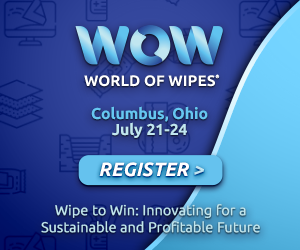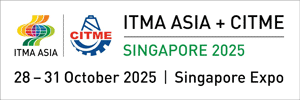Techmer PM’s Materials Design Expertise Helps Branch Technology Earn Additional Honors, Prize Money in NASA Challenge to 3D-Print a Habitat

 CLINTON, Tenn., July 19, 2017 – NASA has awarded a total of $201,023 to teams of citizen inventors that have reached the latest milestone of NASA’s 3D-Printed Habitat Challenge, completing the Phase 2: Level 2 Beam Member competition. The teams are working to find ways to 3D-print habitation structures using recyclables and simulated Martian soil, a technology goal that could support deep space exploration and advance construction capabilities on Earth.
CLINTON, Tenn., July 19, 2017 – NASA has awarded a total of $201,023 to teams of citizen inventors that have reached the latest milestone of NASA’s 3D-Printed Habitat Challenge, completing the Phase 2: Level 2 Beam Member competition. The teams are working to find ways to 3D-print habitation structures using recyclables and simulated Martian soil, a technology goal that could support deep space exploration and advance construction capabilities on Earth.
In Level 2 of Phase 2, teams had to 3D-print a beam for bend testing. Scores were calculated based on the material composition and the maximum load of the beam at failure.
 Phase 2: Level 2 winning teams are:
Phase 2: Level 2 winning teams are:
- 1st place: Moon X Construction of Seoul, South Korea (International team, not eligible for prize money)
- 2nd place: Form Forge of Oregon State University, Corvallis – $67,465
- 3rd place: Foster + Partners | Branch Technology of Chattanooga, Tennessee – $63,783 (earned first place and $85,930 in Phase 2: Level 1)
- 4th place: University of Alaska of Fairbanks – $35,573 (earned second place and $14,070 in Phase 2: Level 1)
- 5th place: CTL Group Mars of Skokie, Illinois – $34,202
- 6th place: ROBOCON of Singapore (International team, not eligible for prize money)
 “This competition is highly dependent on advanced materials design solutions. Techmer PM’s materials design expertise has been vital to our success during each phase of the project,” said Melody Rees, project lead for Branch Technology.
“This competition is highly dependent on advanced materials design solutions. Techmer PM’s materials design expertise has been vital to our success during each phase of the project,” said Melody Rees, project lead for Branch Technology.
“We want to congratulate Branch Technology and Foster + Partners on their achievements,” said John Manuck, chief executive officer of Techmer PM. “What they have accomplished in this competition is incredibly exciting, and we are delighted to be part of it. Working with Branch has allowed Techmer PM to design materials for applications that we are only now starting to imagine.”
“Recyclable plastics were used in the top three scoring teams, indicating that a thermoplastic concrete material may be viable for 3D-printing habitats on Mars,” said Rob Meuller, senior technologist for advanced projects development at the Swamp Works laboratory at NASA’s Kennedy Space Center in Cape Canaveral, Florida, and a subject matter expert for the competition. “Thermoplastics, which are plastic polymers that become moldable when heated, could be obtained from discarded packaging material or even created on Mars using the carbon dioxide atmosphere and hydrogen from water found in the soil. Such concrete materials could also have applications on Earth while using discarded plastic trash.”
 The goal of the challenge is to foster the development of technologies to manufacture a habitat using local indigenous materials with or without recyclable materials. The vision is that autonomous machines will someday be deployed in deep space destinations, including Mars, to construct shelters for human habitation. On Earth, these same capabilities could be used to produce affordable housing wherever it is needed or where access to conventional building materials and skills are limited.
The goal of the challenge is to foster the development of technologies to manufacture a habitat using local indigenous materials with or without recyclable materials. The vision is that autonomous machines will someday be deployed in deep space destinations, including Mars, to construct shelters for human habitation. On Earth, these same capabilities could be used to produce affordable housing wherever it is needed or where access to conventional building materials and skills are limited.
The 3D-Printed Habitat Challenge is run through a partnership with NASA’s Centennial Challenges Program and Bradley University in Peoria, Illinois. Bradley University has partnered with sponsors Caterpillar, Bechtel, and Brick & Mortar Ventures to run the competition.
“These competitors are working to advance critical systems needed for human space exploration,” said Lex Akers, dean of the Caterpillar College of Engineering and Technology at Bradley University. “We are on the edge of developing new, innovative, and disruptive ideas that could change our future. This type of work will allow us to explore new ideas as we partner in creating solutions for our world and beyond.”
 The challenge comprises three phases. Phase 1, the Design Competition, was completed in 2015. Phase 2, the Structural Member Competition, has three sub-competitions, carries a $1.1 million prize purse, and focuses on the material technologies needed to create structural components. The Phase 3 On-Site Habitat Competition has a $1.5 million prize purse, and will focus on automated 3D-print systems to autonomously construct a complete habitat.
The challenge comprises three phases. Phase 1, the Design Competition, was completed in 2015. Phase 2, the Structural Member Competition, has three sub-competitions, carries a $1.1 million prize purse, and focuses on the material technologies needed to create structural components. The Phase 3 On-Site Habitat Competition has a $1.5 million prize purse, and will focus on automated 3D-print systems to autonomously construct a complete habitat.
Teams will now work toward Phase 2: Level 3, where they will be required to 3D-print a dome structure and provide samples for crush testing. Teams must qualify for this level based on their performance in the previous levels. The event will be open to the public in Peoria on Aug. 25 and 26 through registration.
NASA’s Centennial Challenges program is part of the agency’s Space Technology Mission Directorate and is managed at NASA’s Marshall Space Flight Center in Huntsville, Alabama. NASA invites the public to participate in prize competitions and challenges to drive innovation and enable solutions in aeronautics and space technology focus areas.
For more information about the competition, visit: http://www.nasa.gov/3DPHab
###
About Techmer PM
Techmer PM is a leading materials design company that works in partnership with plastics processors, OEMs, and designers to solve some of their most difficult business, manufacturing, and sustainability challenges. The company’s solutions modify the aesthetics, as well as extend and maintain the physical properties of plastic products. The company designs custom solutions for customers to maximize performance through collaboration and by leveraging its leading-edge technology. Techmer PM was recognized by Plastics News “Best Places to Work” for 2014, 2016 and 2017. Learn more by visiting www.techmerpm.com.
Contact Information
Email: press@techmerpm.comURL: www.techmerpm.com
Phone: Tori Watson, Market Engagement & Communication Lead, Phone: +1-865-457-6700
Company: Techmer PM

